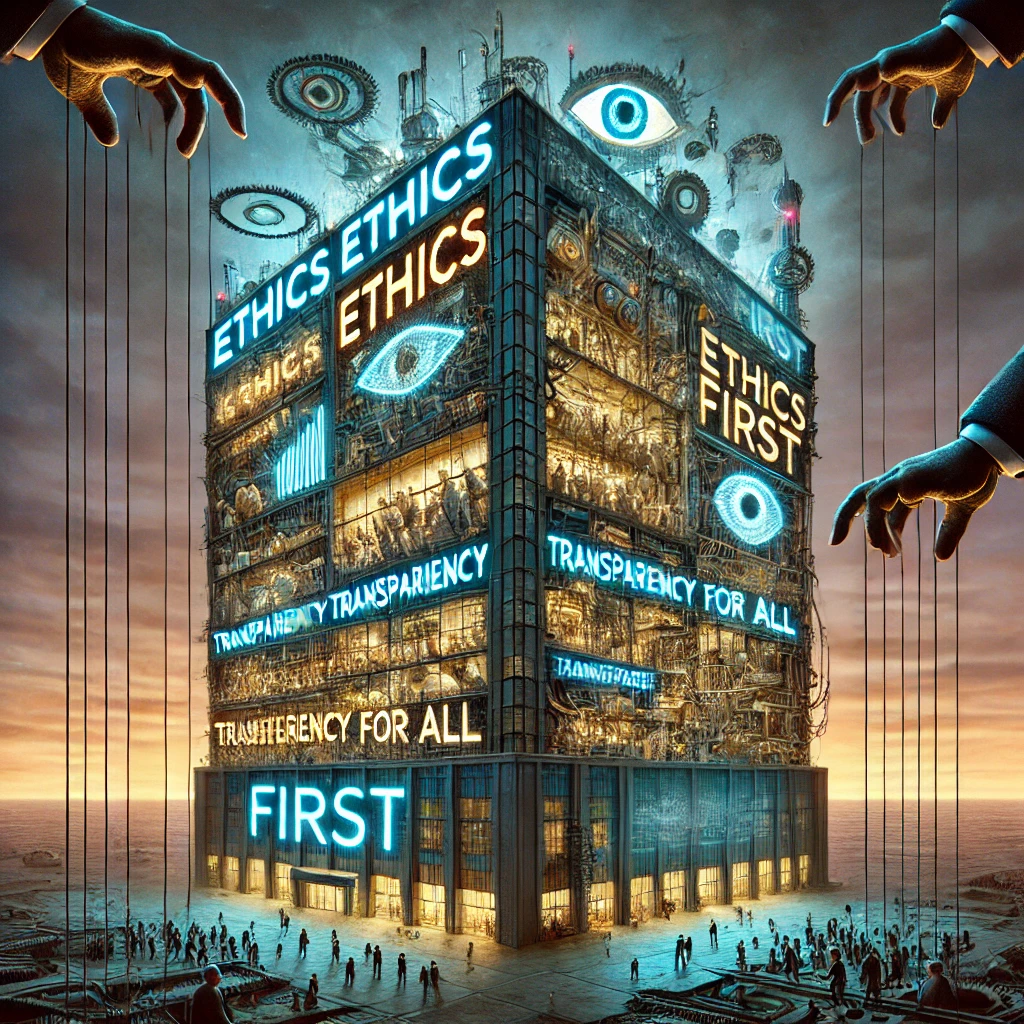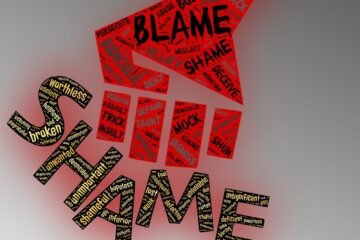
A conceptual illustration of corporate imbalance
The Core Dimensions of Organizational Imbalance
The Vision vs. Reality Gap: A Tool for Deflection
Organizations craft ambitious visions that do not align with operational realities. This discrepancy is not merely an oversight—it is a strategic manoeuvre designed to manage external perception while preserving internal power structures.
Example:
- A tech company champions AI ethics while quietly deploying data-harvesting models that fuel surveillance capitalism.
- A government proclaims its commitment to transparency while expanding secret intelligence operations.
Why It Happens:
- Contradictions create plausible deniability—allowing institutions to point to their stated mission rather than their actual actions.
- Public trust is fragmented, as different audiences latch onto different narratives—diluting resistance.
- Vision statements serve as pressure-release valves, redirecting scrutiny away from systemic issues.
Bureaucratic Rigidity: Resistance to Disruption
Organizations often claim that complexity and bureaucracy make change difficult—but in reality, these structures are designed to neutralize disruption and maintain control.
Example:
- Large financial institutions argue that regulation is too complex, preventing meaningful oversight.
- Government agencies delay climate action policies by citing inter-agency coordination challenges.
Why It Happens:
- Bureaucracy functions as a delaying tactic—exhausting public attention until urgency fades.
- Complex regulations serve as gatekeeping mechanisms, limiting participation from those outside the system.
- Institutional inertia creates predictability, ensuring that real change remains slow, if not impossible.
Ethical Frameworks vs. Profit Imperatives: The Contradiction That Sustains Power
The tension between ethics and financial imperatives is often framed as an unfortunate trade-off. In reality, this contradiction is carefully managed to maintain institutional legitimacy.
Example:
- Pharmaceutical companies set life-saving drug prices beyond affordability, while branding themselves as healthcare innovators.
- Environmental groups accept funding from fossil fuel industries, creating conflicts of interest in policy advocacy.
Why It Happens:
- Ethical contradictions allow institutions to signal virtue to the public while maintaining exploitative business models.
- Crisis-driven PR campaigns redirect focus to “improvement efforts” rather than fundamental structural changes.
- Stakeholders are fragmented into competing interests, making collective resistance harder.
Centralized Power: Stifling Decentralized Innovation
Hierarchical structures concentrate decision-making power at the top, often at the expense of ground-level innovation and adaptability.
Example:
- Governments centralize policy-making, limiting local autonomy and adaptability.
- Tech companies suppress open-source solutions, maintaining dependence on proprietary models.
Why It Happens:
- Centralization ensures that challenges to authority remain contained within bureaucratic chains.
- Innovation is permitted only when it serves the institution’s interests—not when it disrupts its control.
- Decentralized models threaten established hierarchies, so they are either co-opted or dismantled.
Short-Term Metrics vs. Long-Term Resilience: The Illusion of Progress
Institutions prioritize short-term metrics—quarterly profits, election cycles, or rapid expansion—over long-term sustainability. This imbalance creates the illusion of progress while driving long-term instability.
Example:
- Companies slash jobs for immediate profitability, only to struggle with workforce shortages later.
- Governments enact populist policies that win elections but weaken institutional trust.
Why It Happens:
- Short-term results create the appearance of competence, even if they lead to future collapse.
- Leadership turnover ensures that long-term consequences fall on someone else’s watch.
- Performance metrics are designed to reward immediate gains, reinforcing short-sighted decision-making.
Breaking the Cycle of Imbalance
Implementing Structural Self-Awareness: A System That Sees Itself
Organizations must embed mechanisms for continuous self-evaluation—moving beyond performative audits and toward real-time structural accountability.
🔹 Establish independent oversight with real authority to challenge internal contradictions.
🔹 Encourage open-source governance models where stakeholders have direct influence over policy decisions.
🔹 Track not just stated goals, but measurable alignment between vision and action.
Disrupting Bureaucratic Entrenchment: Avoiding the Deliberate Delay Tactic
Organizations thrive on exhaustion tactics—stalling until urgency dissipates. Breaking this requires disrupting the cycle before delays neutralize action.
🔹 Set non-negotiable timelines for policy and corporate commitments—if change isn’t enacted by X date, consequences follow.
🔹 Shift from centralized institutions to modular, adaptive governance models that reduce reliance on bureaucratic inertia.
🔹 Implement decision-tracking systems that hold leadership accountable for inaction.
Redesigning Incentives: Eliminating Reward Structures for Short-Termism
Institutions must redesign incentives to prioritize sustainability, ethical governance, and adaptability.
🔹 Executive compensation should be tied to long-term impact, not quarterly earnings.
🔹 Policy success should be measured on multi-year resilience, not electoral popularity.
🔹Stakeholder representation should expand beyond shareholders—including workers, communities, and non-financial interests.
Exposing Institutional Contradictions: The Power of Narrative Disruption
To weaken the illusion of balance, contradictions must be exposed and made undeniable.
🔹 Use pattern recognition to highlight recurring institutional failures across industries.
🔹 Shift conversations away from corporate apologies and toward structural demands.
🔹 Frame ethical contradictions as systemic features, not isolated lapses.
Conclusion: Reclaiming Institutional Integrity
Organizational imbalance is not an accident—it is an intentional structure designed to maintain power, neutralize dissent, and manipulate public perception. Recognizing this shifts the focus away from minor reforms and toward fundamental structural realignments.
The institutions that survive will not be the ones that maintain their contradictions, but the ones that build internal resilience through true accountability.
The real question is: How do we force institutions to act before collapse forces them to change?




0 Comments